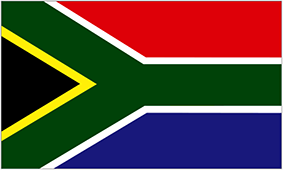
First South African 0.5pc fuel available next month

Sapref's offering is notable for its viscosity of 24cst, which is significantly lower than samples in other locations. A collection of samples from northwest Europe vary between 151-234cst, from Singapore between 118-248cst and from Malaysia between 141-371cst.
Bunker customers in South Africa are used to low viscosity fuel. The most popular high-sulphur marine fuel oil supplied there is usually around 180cst, compared with 380cst supplied in northwest Europe, Singapore and Malaysia. Vessels bunkering at South African ports tend to be older, and cannot easily burn the less expensive and more viscous 380cst.
Refiners and blenders used to think more about viscosity — the two main high-sulphur bunker grades were classed as 380cst and 180cst. But now the marine fuel and shipping industries transition from high- to low-sulphur marine fuels, to meet the International Maritime Organisation (IMO) 0.5pc sulphur cap, the new key specification to meet is sulphur content.
The new 0.5pc sulphur fuel tested within all the maximum specification limits such as density, flash point and pour point. It will be available on the South African market next month, although this was not confirmed with the refiner.
Durban is a major bunkering location, selling mainly to dry bulk and container vessels. The port is supplied with marine fuels by Engen's 105,000 b/d Durban refinery and by Sapref.


Trump weighs using $2 billion in CHIPS Act funding for critical minerals

Codelco cuts 2025 copper forecast after El Teniente mine collapse

Electra converts debt, launches $30M raise to jumpstart stalled cobalt refinery

Barrick’s Reko Diq in line for $410M ADB backing

Abcourt readies Sleeping Giant mill to pour first gold since 2014

Nevada army depot to serve as base for first US strategic minerals stockpile

SQM boosts lithium supply plans as prices flick higher

Viridis unveils 200Mt initial reserve for Brazil rare earth project

Tailings could meet much of US critical mineral demand – study

Kyrgyzstan kicks off underground gold mining at Kumtor

Kyrgyzstan kicks off underground gold mining at Kumtor

KoBold Metals granted lithium exploration rights in Congo

Freeport Indonesia to wrap up Gresik plant repairs by early September

Energy Fuels soars on Vulcan Elements partnership

Northern Dynasty sticks to proposal in battle to lift Pebble mine veto

Giustra-backed mining firm teams up with informal miners in Colombia

Critical Metals signs agreement to supply rare earth to US government-funded facility

China extends rare earth controls to imported material

Galan Lithium proceeds with $13M financing for Argentina project

Kyrgyzstan kicks off underground gold mining at Kumtor

Freeport Indonesia to wrap up Gresik plant repairs by early September

Energy Fuels soars on Vulcan Elements partnership

Northern Dynasty sticks to proposal in battle to lift Pebble mine veto

Giustra-backed mining firm teams up with informal miners in Colombia

Critical Metals signs agreement to supply rare earth to US government-funded facility

China extends rare earth controls to imported material

Galan Lithium proceeds with $13M financing for Argentina project

Silver price touches $39 as market weighs rate cut outlook

















